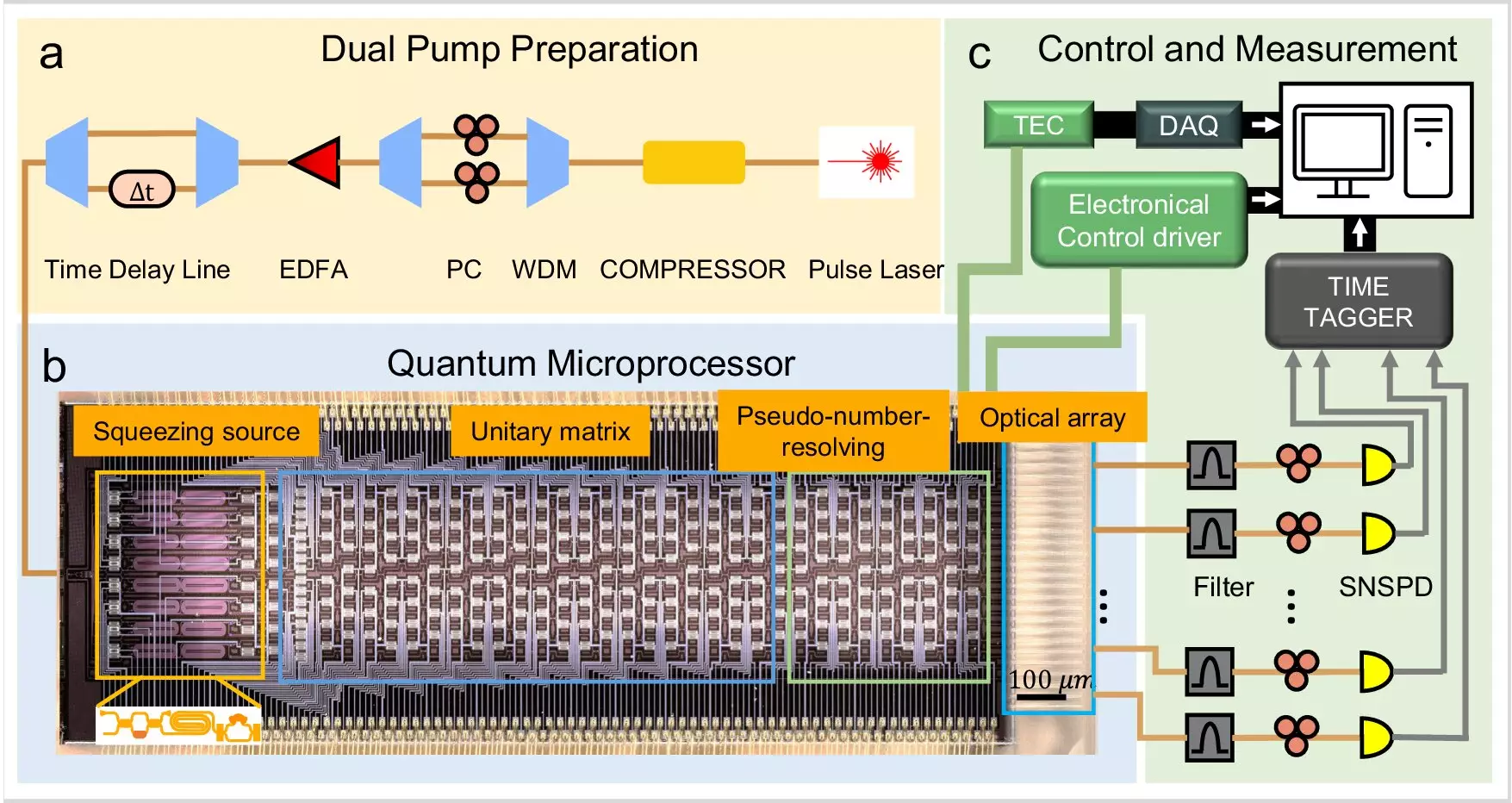Quantum simulation stands at the forefront of scientific innovation, offering profound insights into complex systems that resist analysis through traditional computational means. This transformative approach is particularly pivotal in fields such as financial analytics, cybersecurity, pharmaceutical innovation, artificial intelligence, and machine learning. Despite the success conventional computers have achieved, certain intricate problems, such as simulating molecular vibronic spectra, remain insurmountable. These challenges, characterized by their computational intensity and the limitations of classical machines, have spurred extensive research into quantum algorithms and hardware.
One of the enduring challenges in the realm of molecular design and analysis is the detailed examination of molecular vibronic spectra. Understanding how molecules vibrate and interact at a quantum level is essential for the development of new materials and medications. Classical supercomputers, while powerful, struggle to efficiently tackle these problems due to their computational complexity. Researchers have, therefore, turned their focus toward quantum computing as a solution to simulate these spectra accurately. However, despite the promise of quantum technologies, early experiments have frequently been constrained by issues of accuracy and noise, limiting their applicability to relatively simple molecular structures.
Researchers at The Hong Kong Polytechnic University (PolyU) have made significant strides in overcoming these limitations by creating a pioneering quantum microprocessor chip designed specifically for molecular spectroscopy simulation. This groundbreaking achievement represents a milestone in the field of quantum engineering and molecular analysis, as it enables the simulation of complex and large-scale molecular structures, marking the first of its kind globally.
Under the leadership of Professor Liu Ai-Qun, a distinguished figure in the world of quantum engineering, the team has effectively bridged theoretical concepts and practical application. Their work, recently published in Nature Communications, introduces a sophisticated modeling framework for simulating molecular vibronic spectra via a 16-qubit quantum microprocessor chip. This chip utilizes a linear photonic network combined with squeezed vacuum quantum light sources—elements carefully crafted to capture the nuances of quantum effects that are traditionally elusive in classical simulations.
The research team meticulously developed a comprehensive quantum computing framework that integrates optical, electronic, and thermal functionalities into a cohesive system. This system encompasses everything from the physical quantum microprocessor chip to sophisticated software interfaces designed for efficient user interaction and underlying quantum algorithms. The transition from theory to functioning hardware involved extensive collaboration with institutions across Asia and Europe, demonstrating a robust international effort in the development of this technology.
The quantum microprocessor chip’s potential applications are revolutionary—extending beyond simple molecular analysis to include simulations of more complex biological structures and optimized molecular reactions, which can be executed with enhanced speed and precision. Dr. Zhu Hui Hui, the primary architect behind the project, highlighted the transformative potential of their work, stating the goal is to facilitate early-stage molecular simulations that transcend classical limitations and harness the inherent acceleration capabilities of quantum computation.
The implications of this technological leap in quantum simulations extend well into practical arenas, including material science, chemistry, and condensed matter physics. The integrated quantum microprocessor offers a fresh and exciting approach to information processing that could ultimately revolutionize how researchers and industries tackle molecular docking problems and leverage advancements in quantum machine learning.
As we look forward, the team at PolyU envisions scaling their microprocessor capabilities to apply to even more complex systems. Professor Liu emphasizes that the underlying motivation for their research is the potential for significant societal and industrial benefits stemming from quantum simulation technologies. By continuing to innovate and expand the applications of quantum microprocessors, the goal is not only to advance scientific inquiry but also to provide impactful solutions to real-world problems.
The advancements made by The Hong Kong Polytechnic University in quantum simulation represent a significant turning point in both quantum computing and molecular analysis. With their new microprocessor chip, the researchers have unlocked possibilities that were previously deemed unattainable, setting the stage for unprecedented breakthroughs that can reshape our understanding of molecular interactions and applications. As this field continues to evolve, the integration of quantum technology into practical science promises to yield benefits that resonate through multiple sectors, ultimately contributing to future innovations that enrich human knowledge and capability.


Leave a Reply